| Date | Text | |
|---|---|---|
30 Nov 1915

Barnard's Star |
Barnard's Star (astronomy) Barnard's Star is discovered by Edward Emerson Barnard. |
|
30 Nov 1915

Harlow Shapley |
Harlow Shapley (astronomy) Harlow Shapley found that the spectrum of S Sagittae and other Cepheids varied with brightness, recording it as spectral type F0 leading to maximum, F4 at maximum, and G3 just before minimum brightness. |
|
30 Nov 1915

Gilbert N. Lewis |
Gilbert N. Lewis (chemistry) Gilbert N. Lewis and Irving Langmuir formulate an electron shell model of chemical bonding. |
|
30 Nov 1915

Sydney Chapman |
Sydney Chapman (chemistry) Sydney Chapman and David Enskog systematically develop a kinetic theory of gases. |
|
30 Nov 1915

Jan Czochralski |
Jan Czochralski (chemistry) Jan Czochralski invents a method for growing single crystals of metals. |
|
30 Nov 1915

Ludwig Bieberbach |
Ludwig Bieberbach (mathematics) Ludwig Bieberbach presents the Bieberbach conjecture. |
|
30 Nov 1915

Wacław Sierpiński |
Wacław Sierpiński (mathematics) Wacław Sierpiński gives the first example of an absolutely normal number and describes the Sierpinski carpet. |
|
30 Nov 1915

Georges Guillain |
Georges Guillain (medicine) Georges Guillain, Jean Alexandre Barré and André Strohl diagnose two soldiers with Guillain-Barré syndrome of the peripheral nervous system and describe the key diagnostic abnormality of increased spinal fluid protein production, but normal cell count. |
|
30 Nov 1915

Eugen Bleuler |
Eugen Bleuler (medicine) Eugen Bleuler publishes his Lehrbuch der Psychiatrie, including a definition of complexes arising from diffuse brain damage, known as "Bleuler's psycho syndrome". |
|
30 Nov 1915
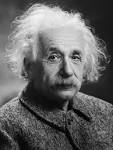
Albert Einstein |
Albert Einstein (physics) Albert Einstein publishes "Die Grundlage der allgemeinen Relativitätstheorie" on general relativity in Annalen der Physik 49 and shows that the field equations of general relativity admit wavelike solutions. |
|
30 Nov 1915

Karl Schwarzschild |
Karl Schwarzschild (physics) Karl Schwarzschild solves the Einstein vacuum field equations for uncharged spherically-symmetric non-rotating systems. |
|
30 Nov 1915

Lewis M. Terman |
Lewis M. Terman (psychology) Lewis M. Terman of Stanford University develops the first of the Stanford–Binet Intelligence Scales for intelligence testing. |
|
01 Jan 1916

Royal Army Medical Corps |
Royal Army Medical Corps (medicine) The British Royal Army Medical Corps carries out the first successful blood transfusion using blood that had been stored and cooled. |
|
10 Jan 1916

Sune K. Bergström |
birth Sune K. Bergström Sune K. Bergström (died 2004), Swedish biochemist, winner of the 1982 Nobel Prize in Physiology or Medicine. |
|
12 Feb 1916
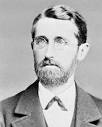
Richard Dedekind |
death Richard Dedekind Richard Dedekind (born 1831), German mathematician. |
|
19 Feb 1916
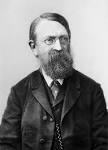
Ernst Mach |
death Ernst Mach Ernst Mach (born 1838), Austrian-born physicist. |
|
28 Feb 1916

Audley Bowdler Williamson |
birth Audley Bowdler Williamson Born 28 Feb 1916; died 21 Nov 2004 at age 88. British inventor and manufacturer of skin-care products who invented Swarfega hand cleaner, a green jelly that mechanics, printers and others use to wash grease, grime, and ink from their hands. "AB," as he was known, started his company, Deb Ltd., in 1941, selling a mild detergent to treat silk stocking, a market which collapsed with the arrival of nylons after WW II. However, he knew that mechanics cleaned their hands with petrol, paraffin and sand which was effective at removing oil, but also caused dry skin and dermatitis. He adapted his detergent formula to clean oil from skin without these side effects, and named it by combining "swarf" (term for greasy grit) and "-ega" (eager). By the time he retired, the company had 20 brands. |
|
04 Mar 1916
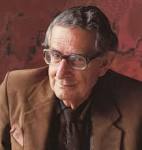
Hans Eysenck |
birth Hans Eysenck Hans Eysenck (died 1997), German-born psychologist. |
|
22 Mar 1916

Nathan Kline |
birth Nathan Kline Born 22 Mar 1916; died 11 Feb 1983 at age 66. Nathan Schellenberg Kline was an American psychiatrist who is credited with founding the field of psychopharmacology. In 1953, he began investigating the use of a new drug, reserpine, to treat schizophrenia. He continued to pioneer in the biochemical treatment of mentally ill patients by introducing the use of such drugs as the antidepressants lithium and iproniazid and the tranquilizer resperine. Because these drugs so successfully drugs treated two of the major categories of psychiatric illness, thousands of patients - formerly considered untreatable - were able to leave institutions and to rejoin society. By 1957, iproniazid, first in the class of monoamine oxidase (MAO) inhibitors, was treating an estimated 400,000 people in the U.S. |
|
26 Mar 1916
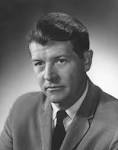
Christian B. Anfinsen |
birth Christian B. Anfinsen Christian B. Anfinsen (died 1995), American biochemist, winner of the 1972 Nobel Prize in Chemistry. |
|
13 Apr 1916

Hybrid seed corn |
Hybrid seed corn In 1916, the first U.S. shipment of hybrid seed corn was sold to Samuel Ramsay of Jacobsburg, Ohio by Funk Brothers Seed Co., of Bloomington, Illinois. The price was $15 a bushel. |
|
14 Apr 1916

Lawrence Hogben |
birth Lawrence Hogben Lawrence Hogben (died 2015), New Zealand meteorologist. |
|
18 Apr 1916

Peter Nissen |
Peter Nissen (technology) Capt. Peter Nissen completes the prototype Nissen hut. |
|
30 Apr 1916

Claude Elwood Shannon |
birth Claude Elwood Shannon Born 30 Apr 1916; died 27 Feb 2001 at age 84. American mathematician. |
|
30 Apr 1916

Claude Shannon |
birth Claude Shannon Claude Shannon (died 2001), American mathematician, "father of information theory". |
|
06 May 1916

Robert H. Dicke |
birth Robert H. Dicke Robert H. Dicke (died 1997), American physicist. |
|
04 Jun 1916
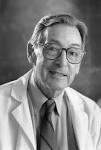
Robert F. Furchgott |
birth Robert F. Furchgott Robert F. Furchgott (died 2009), American biochemist, winner of the 1998 Nobel Prize in Physiology or Medicine. |
|
08 Jun 1916
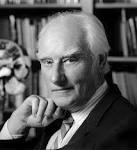
Francis Crick |
birth Francis Crick Francis Crick (died 2004), English-born molecular biologist, co-discoverer of the nucleic acid double helix structure in 1953, winner of the 1962 Nobel Prize in Physiology or Medicine. |
|
11 Jun 1916

Alexander Prokhorov |
birth Alexander Prokhorov Alexander Prokhorov (died 2002), Australian-born Soviet Russian physicist. |
|
15 Jul 1916

Ilya Ilych Mechnikov |
death Ilya Ilych Mechnikov Died 15 Jul 1916 at age 71 (born 16 May 1845). Russian-French bacteriologist and zoologist who shared, the 1908 Nobel Prize for Physiology or Medicine with Paul Ehrlich “in recognition of their work on immunity.” Metchnikoff's research was on phagocytosis, a fundamental process in immunology whereby macrophages and other specialized cells engulf and digest bacteria and other foreign particles. In 1882, leaving his university teaching career, he set up a private laboratory at Messina to better pursue his interest in microbes and the immune system. He discovered phagocytosis by experiments on the larvae of starfish. His theory that certain white blood cells could engulf and destroy harmful bacteria was at first disbelieved, then slowly accepted by other scientists. (Name also spelled Elie Metchnikoff.) |
|
15 Jul 1916

Élie Metchnikoff |
death Élie Metchnikoff Élie Metchnikoff (born 1845), Russian zoologist and immunologist, winner of the 1908 Nobel Prize in Physiology or Medicine. |
|
23 Jul 1916

William Ramsay |
death William Ramsay Sir William Ramsay (born 1852), Scottish-born chemist, winner of the 1904 Nobel Prize in Chemistry. |
|
25 Aug 1916

Frederick Chapman Robbins |
birth Frederick Chapman Robbins Frederick Chapman Robbins (died 2003), American pediatrician and virologist, winner of the 1954 Nobel Prize in Physiology or Medicine. |
|
11 Sep 1916

Quebec Bridge |
Quebec Bridge (technology) The almost-completed Quebec Bridge collapses for the second time. |
|
14 Sep 1916

Pierre Duhem |
death Pierre Duhem Died 14 Sep 1916 at age 55 (born 10 Jun 1861). Pierre-Maurice-Marie Duhem was a French physicist, philosopher of science and mathematician who emphasized a history of modern science based on evolutionary metaphysical concepts. He had a wide variety of mathematical interests from mechanics and physics to philosophy and the history of mathematics. Duhem studied magnetism following the work of Gibbs and Helmholtz and also worked on thermodynamics and hydrodynamics producing over 400 papers. He maintained that the role of theory in science is to systematize relationships rather than to interpret new phenomena. |
|
03 Oct 1916
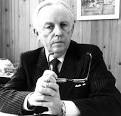
Frank Pantridge |
birth Frank Pantridge Born 3 Oct 1916; died 26 Dec 2004 at age 88. Irish cardiologist who developed the life-saving portable defibrillator. He found out that death occurred within the first hour for 60% of males (up to middle-age) that died from heart attack, and of these, 90% suffered ventricular fibrillation. To begin earliest possible treatment, in 1965, Pantridge equipped an ambulance with a portable defibrillator. It achieved a 50% long-term patient survival rate. This pre-hospital coronary care plan was adopted rapidly in America and was used in 1972 when President Lyndon Johnson suffered a heart attack during a visit to Virginia. In 1979, the first automated external defibrillators (AEDs) became available. The British government lagged, but in 1990 funded defibrillators for all front-line ambulances in England. |
|
04 Oct 1916
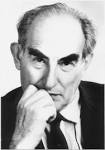
Vitaly Ginzburg |
birth Vitaly Ginzburg Vitaly Ginzburg (died 2009), Soviet Russian theoretical physicist, astrophysicist, one of the fathers of the Soviet hydrogen bomb, winner of the 2003 Nobel Prize in Physics, member of the Soviet and Russian Academies of Sciences. |
|
16 Oct 1916
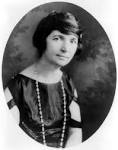
Margaret Sanger |
Margaret Sanger (medicine) Margaret Sanger opens a family planning and birth control clinic in Brownsville, Brooklyn, the first of its kind in the United States. Nine days later, she is arrested for breaking a New York state law prohibiting distribution of contraceptives. This same year, she publishes What Every Girl Should Know, providing information about such topics as menstruation and sexuality in adolescents. |
|
19 Oct 1916
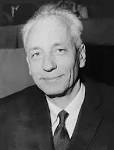
Jean Dausset |
birth Jean Dausset Jean Dausset (died 2009), French immunologist, winner of the 1980 Nobel Prize in Physiology or Medicine. |
|
10 Nov 1916

Walter Sutton |
death Walter Sutton Walter Sutton (born 1877), American geneticist and surgeon. |
|
13 Nov 1916
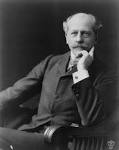
Percival Lowell |
death Percival Lowell Percival Lowell (born 1855), American astronomer. |
|
24 Nov 1916

Hiram Maxim |
death Hiram Maxim Hiram Maxim (born 1840), American inventor of the machine gun. |
|
05 Dec 1916

Hilary Koprowski |
birth Hilary Koprowski Born 5 Dec 1916; died 11 Apr 2013 at age 96. Polish virologist and immunologist who discovered the first vaccine against poliomyelitis which was based on oral administration of attenuated polio virus. In researching a polio vaccine, he decided to focus on the use of live viruses that were attenuated (rendered non-virulent) instead of the killed viruses that became the basis for the injections created by Jonas Salk. Koprowski viewed the live vaccine as more powerful since it entered the intestinal tract directly and could provide lifelong immunity, whereas the Salk vaccine required boosters. Also, taking a vaccine by mouth is easy, whereas an injection is more expensive and needs medical facilities. It was taken by the first child on 27 Feb 1950 and within 10 years was used for immunization on four continents. |
|
08 Dec 1916

Cláudio Villas-Boas |
birth Cláudio Villas-Boas Born 8 Dec 1916; died 1 Mar 1998 at age 81. Brazilian anthropologist and activist whose life was dedicated to the search for and protection of the country's indigenous people as their lands were taken over and developed; he and his brother Orlando aided in the creation of the Xingu National Park reservation in 1961 and the National Indian Foundation six years later. He helped to build more than 30 airfields in the middle of the jungle and opened more than 1,000 miles of trails under the Amazon canopy. Together with his brothers, Cláudio contacted some of the most feared tribes like the Kalapalos, Kayabi, Kamaiurás, Meinacos, and Txucarramães. In 1973 they made contact for the first time with the Kreen-Akarore Indians (or Panarás, the giant Indians) in the north of the state of Mato Grosso. |
|
15 Dec 1916

Maurice Wilkins |
birth Maurice Wilkins Maurice Wilkins (died 2004), New Zealand-born English molecular biologist, co-discoverer of the nucleic acid double helix structure in 1953 using X-ray diffraction, winner of the 1962 Nobel Prize in Physiology or Medicine. |
|
27 Dec 1916

John Duckworth |
birth John Duckworth John Duckworth (died 2015), British physicist. |
|
31 Dec 1916

Alice Ball |
death Alice Ball Alice Ball (born 1892), African-American chemist. |